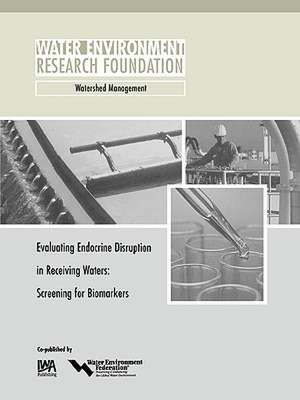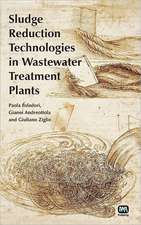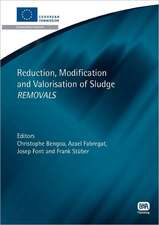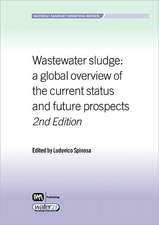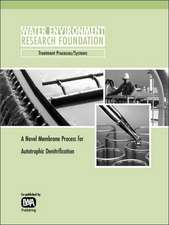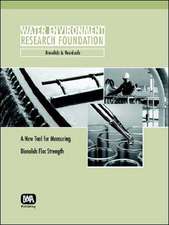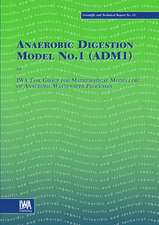Evaluating Endocrine Disruption in Receiving Waters: Werf Report
Autor P Clineen Limba Engleză Paperback – 18 oct 2006
Din seria Werf Report
- 23%
 Preț: 962.91 lei
Preț: 962.91 lei - 23%
 Preț: 788.17 lei
Preț: 788.17 lei - 23%
 Preț: 810.90 lei
Preț: 810.90 lei - 23%
 Preț: 800.05 lei
Preț: 800.05 lei - 23%
 Preț: 785.78 lei
Preț: 785.78 lei - 23%
 Preț: 801.92 lei
Preț: 801.92 lei - 23%
 Preț: 790.53 lei
Preț: 790.53 lei - 23%
 Preț: 800.98 lei
Preț: 800.98 lei - 23%
 Preț: 793.15 lei
Preț: 793.15 lei - 23%
 Preț: 795.49 lei
Preț: 795.49 lei - 23%
 Preț: 791.27 lei
Preț: 791.27 lei - 23%
 Preț: 797.16 lei
Preț: 797.16 lei - 23%
 Preț: 827.44 lei
Preț: 827.44 lei - 23%
 Preț: 812.31 lei
Preț: 812.31 lei - 23%
 Preț: 783.22 lei
Preț: 783.22 lei - 23%
 Preț: 789.59 lei
Preț: 789.59 lei - 23%
 Preț: 793.61 lei
Preț: 793.61 lei - 23%
 Preț: 800.50 lei
Preț: 800.50 lei - 23%
 Preț: 834.41 lei
Preț: 834.41 lei - 23%
 Preț: 884.93 lei
Preț: 884.93 lei - 23%
 Preț: 797.64 lei
Preț: 797.64 lei - 23%
 Preț: 786.98 lei
Preț: 786.98 lei - 23%
 Preț: 799.04 lei
Preț: 799.04 lei - 23%
 Preț: 786.78 lei
Preț: 786.78 lei - 23%
 Preț: 798.58 lei
Preț: 798.58 lei - 23%
 Preț: 798.58 lei
Preț: 798.58 lei - 23%
 Preț: 834.63 lei
Preț: 834.63 lei - 23%
 Preț: 839.63 lei
Preț: 839.63 lei - 23%
 Preț: 798.58 lei
Preț: 798.58 lei - 23%
 Preț: 965.99 lei
Preț: 965.99 lei
Preț: 810.43 lei
Preț vechi: 1052.51 lei
-23% Nou
Puncte Express: 1216
Preț estimativ în valută:
155.10€ • 161.32$ • 128.04£
155.10€ • 161.32$ • 128.04£
Carte tipărită la comandă
Livrare economică 10-16 aprilie
Preluare comenzi: 021 569.72.76
Specificații
ISBN-13: 9781843396505
ISBN-10: 1843396505
Pagini: 284
Dimensiuni: 210 x 279 x 15 mm
Greutate: 0.65 kg
Editura: IWA Publishing (Intl Water Assoc)
Seria Werf Report
Locul publicării:United States
ISBN-10: 1843396505
Pagini: 284
Dimensiuni: 210 x 279 x 15 mm
Greutate: 0.65 kg
Editura: IWA Publishing (Intl Water Assoc)
Seria Werf Report
Locul publicării:United States
